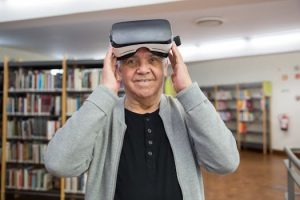Innovative Public Spaces: Community Engagement and Urban Design
Public spaces are an integral part of urban life. They serve as a common ground for people of diverse backgrounds to come together, engage with one another, and experience the city in a unique way. As our cities continue to grow and evolve, the need for innovative public spaces becomes increasingly important. These spaces not only provide aesthetically pleasing environments but also play a crucial role in promoting community engagement and fostering a sense of belonging. In this article, we will explore the concept of innovative public spaces and how they can be designed to encourage community engagement and enhance urban design.
What are Innovative Public Spaces?
Innovative public spaces are the result of innovative urban design that goes beyond the traditional approach. These spaces are designed with the aim of redefining the way we interact with our surroundings, making them more inclusive, interactive, and sustainable. They are not just static spaces but rather dynamic environments that constantly evolve and adapt to the changing needs and preferences of the community.
Examples of Innovative Public Spaces
One of the most iconic examples of innovative public spaces is the High Line in New York City. It is a 1.45-mile-long elevated park built on a disused railway line that runs through the city. The park features unique landscapes, public art installations, and various amenities such as seating areas, walkways, and gathering spaces. It has become a beloved destination for locals and tourists alike, attracting millions of visitors each year.
The 11th Street Bridge Park project in Washington D.C. is another prime example of an innovative public space. This project aims to transform an old and abandoned bridge into a vibrant community space. The bridge will feature interactive spaces for recreation, art, and education, as well as gathering areas for events and performances. The project is a collaboration between the community, local government, and private organizations, emphasizing the importance of community engagement in the creation of public spaces.
The Role of Community Engagement in Urban Design
Community engagement is a crucial element in designing and maintaining innovative public spaces. It involves actively involving the community in the decision-making process, understanding their needs and desires, and utilizing their input to create spaces that are truly reflective of their values and culture. When the community feels ownership and pride in a public space, they are more likely to take care of it, ensuring its sustainability in the long run.
Methods of Community Engagement
Engaging the community in the process of urban design can be achieved through various methods, such as community workshops, surveys, online discussions, and focus groups. These methods should be used to gather information about the community’s needs, concerns, and ideas for the public space. It is important to involve as many members of the community as possible, including diverse groups and marginalized populations, to ensure that the space is inclusive and caters to the needs of all.
Enhancing Urban Design through Innovative Public Spaces
Innovative public spaces have the potential to transform the urban landscape and enhance the overall design of a city. They can serve as landmarks, bring life to underutilized areas, and promote sustainable practices. These spaces also have economic benefits, as they can attract more visitors, increase property values, and spur economic development in the surrounding areas.
Elements of Innovative Public Spaces
There are certain elements that are essential in designing innovative public spaces. These include sustainability, accessibility, and adaptability. Sustainability is about creating spaces that are environmentally friendly and contribute to the overall well-being of the community. Accessibility ensures that the space is inclusive and welcoming to people of all abilities and backgrounds. Adaptability allows the space to evolve and cater to the changing needs and preferences of the community.
Conclusion
Innovative public spaces play a significant role in promoting community engagement and enhancing urban design. They provide a platform for people to come together, interact, and experience their city in a unique way. By involving the community in the design and maintenance of these spaces, we can ensure that they reflect the values and needs of the people who use them. As our cities continue to grow, the creation of innovative public spaces will be crucial to creating inclusive, sustainable, and vibrant urban environments.











